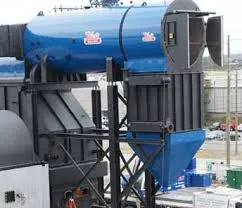- Afrikaans
- Albanian
- Amharic
- Arabic
- Armenian
- Azerbaijani
- Basque
- Belarusian
- Bengali
- Bosnian
- Bulgarian
- Catalan
- Cebuano
- China
- China (Taiwan)
- Corsican
- Croatian
- Czech
- Danish
- Dutch
- English
- Esperanto
- Estonian
- Finnish
- French
- Frisian
- Galician
- Georgian
- German
- Greek
- Gujarati
- Haitian Creole
- hausa
- hawaiian
- Hebrew
- Hindi
- Miao
- Hungarian
- Icelandic
- igbo
- Indonesian
- irish
- Italian
- Japanese
- Javanese
- Kannada
- kazakh
- Khmer
- Rwandese
- Korean
- Kurdish
- Kyrgyz
- Lao
- Latin
- Latvian
- Lithuanian
- Luxembourgish
- Macedonian
- Malgashi
- Malay
- Malayalam
- Maltese
- Maori
- Marathi
- Mongolian
- Myanmar
- Nepali
- Norwegian
- Norwegian
- Occitan
- Pashto
- Persian
- Polish
- Portuguese
- Punjabi
- Romanian
- Russian
- Samoan
- Scottish Gaelic
- Serbian
- Sesotho
- Shona
- Sindhi
- Sinhala
- Slovak
- Slovenian
- Somali
- Spanish
- Sundanese
- Swahili
- Swedish
- Tagalog
- Tajik
- Tamil
- Tatar
- Telugu
- Thai
- Turkish
- Turkmen
- Ukrainian
- Urdu
- Uighur
- Uzbek
- Vietnamese
- Welsh
- Bantu
- Yiddish
- Yoruba
- Zulu
ታኅሣ . 01, 2024 09:58 Back to list
stainless steel casting foundry
Stainless Steel Casting Foundry An Overview
Stainless steel casting foundries play a vital role in various industries, ranging from automotive to aerospace, and from medical devices to energy production. The process of stainless steel casting allows for the creation of intricate and complex components that are essential in modern machinery and tools, which demand high strength, durability, and corrosion resistance.
Understanding Stainless Steel Casting
Stainless steel casting involves the process of pouring molten stainless steel into molds to create specific shapes and designs. The process begins with selecting the appropriate grade of stainless steel, which is an alloy primarily composed of iron, nickel, chromium, and other elements. The choice of alloy affects the material’s properties, including its resistance to corrosion, strength, and formability.
The most common types of stainless steel used in casting are austenitic, ferritic, martensitic, and duplex stainless steels, each offering unique characteristics and benefits. For instance, austenitic stainless steels, such as 304 and 316 grades, are known for their excellent corrosion resistance and formability, making them ideal for kitchen equipment and chemical processing applications.
The Casting Process
The stainless steel casting process can be divided into several key steps
1. Pattern Making This initial step involves creating a pattern that mirrors the shape of the final product. Patterns can be made from various materials, including metal, wood, or plastic. They must be crafted with precision to ensure that the final cast accurately reflects the desired dimensions.
2. Mold Creation Once the pattern is made, molds are prepared. Typically, sand casting is a common method where sand is mixed with a binding agent to form a mold. The pattern is pressed into the sand to create a cavity into which the molten stainless steel will be poured.
stainless steel casting foundry

3. Melting the Steel The selected stainless steel is then melted in a furnace. Electric arc furnaces or induction furnaces are commonly used to achieve the high temperatures required to melt stainless steel, reaching upwards of 1600 degrees Celsius (about 2910 degrees Fahrenheit).
4. Pouring The molten stainless steel is carefully poured into the prepared molds. This step requires precision to avoid defects such as air pockets or incomplete filling, which may compromise the integrity of the final product.
5. Cooling and Solidification After pouring, the stainless steel is allowed to cool and solidify in the mold. The cooling rate can be controlled to influence the microstructure and mechanical properties of the cast.
6. Finishing Processes Once the castings have cooled and solidified, they are removed from the molds. Finishing processes, such as machining, grinding, or polishing, are then carried out to achieve the desired surface finish and tolerances.
Applications of Stainless Steel Castings
The versatility of stainless steel castings makes them suitable for a wide range of applications. In the automotive industry, they are used for exhaust systems, engine components, and transmission housings. In the medical field, stainless steel castings are essential for surgical instruments, implants, and diagnostic equipment due to their biocompatibility and resistance to sterilization processes.
Moreover, stainless steel castings are crucial in the petrochemical industry, where equipment must withstand harsh environments and corrosive substances. The energy sector also relies on these castings for components in turbines, pumps, and valves.
Conclusion
In conclusion, stainless steel casting foundries are integral to the production of high-quality components across various industries. The process of casting stainless steel not only enables the creation of complex shapes but also ensures the durability and resistance necessary for demanding applications. As technology advances, the capabilities of stainless steel casting will continue to evolve, meeting the ever-increasing demands of modern industry while maintaining the essential characteristics that make stainless steel an unparalleled material.
-
8mm Thin-Walled Cast Steel Manhole Cover Pallet Bottom Ring | Durable
NewsAug.04,2025
-
Premium Cast Iron Water Main Pipe: Durable, Corrosion-Resistant
NewsAug.03,2025
-
Durable Cast Iron Water Mains | AI-Optimized Systems
NewsAug.02,2025
-
High-Efficiency Propane Boiler for Baseboard Heat | Save Energy
NewsAug.01,2025
-
Premium Source Suppliers for Various Gray Iron Castings
NewsJul.31,2025
-
Durable Cast Iron Water Main Pipes | Long-Lasting
NewsJul.31,2025


